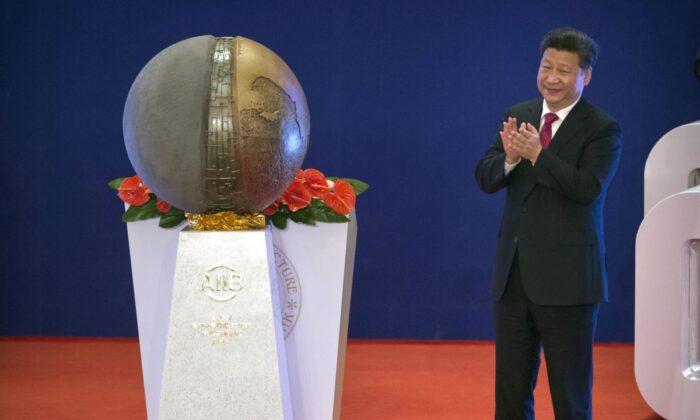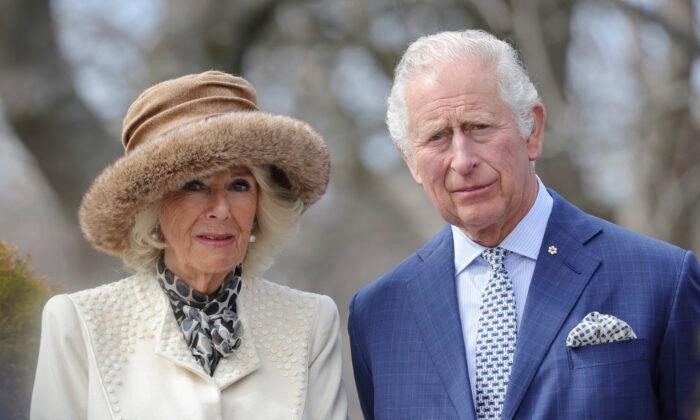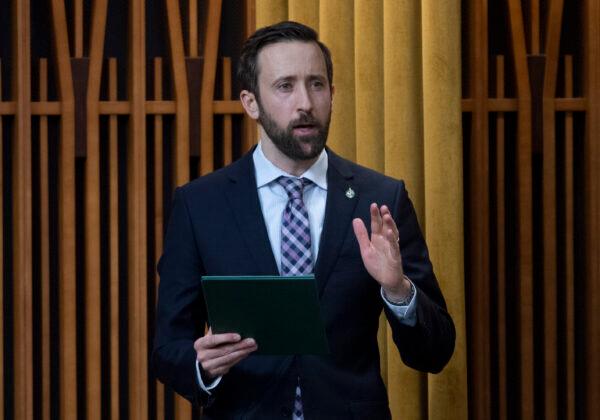Due to a paralyzing lack of fecundity in Canadian foreign policy thinking, there seems to be among certain policymakers and commentators a tendency to make multilateralism into something like a religion. No matter the merits of an institution, if it is “multilateral” it is virtuous, and Canada must be uncritically involved in it.
This approach is manifest when it comes to rationalizing Canada’s questionable membership in the Beijing-run Asian Infrastructure Investment Bank. Established by the Chinese Communist Party on Christmas Day 2015, the bank operates as an alternative to the American and European-led World Bank and International Monetary Fund for funding infrastructure projects in countries throughout Asia, Latin America, and Africa.
Despite warnings from the Americans about the implications of joining the AIIB, Canada, following the lead of other allies such as Germany and Britain, officially joined in 2018. Solidifying the terms of membership was the Asian Infrastructure Investment Bank Agreement Act, an add-on to the 2017 budget bill which committed $256 million over five years with room to increase that to $470 million to up its share.
Upon joining and afterwards, as a continued justification, members of government such as former finance minister Bill Morneau have touted the institution as an opportunity for Canada’s businesses to engage in Asia and grow the economy. Thus far, however, only two companies have really engaged with the bank.
Addressing questions by Conservative Foreign Affairs Critic Michael Chong at a Canada-China Relations Committee meeting on Nov. 23 regarding Canada’s AIIB membership, Foreign Affairs Minister Francois Philippe Champagne attested that the purpose of the bank and Canada’s involvement is to “help the poorest countries in Asia-Pacific and for Canada to be part of that to alleviate social and economic hardship that people are living through.”
Chong also questioned Champagne on the contradiction between expressing concern in his opening statement about China bank loans resulting in debt unsustainability in developing countries, and legitimizing one of the vessels (the AIIB) through which China can do this to achieve influence in other regions. Champagne responded by reiterating that the bank is used for socio-economic development for the poor in the Asia-Pacific region and “making a difference on the ground.”
This illuminates Ottawa’s persistent wishful thinking about China and how it perceives the role of international institutions in its diplomacy.
The bank reflects Beijing’s acknowledgement of its great power status and attempt to forward its revisionist statecraft to challenge the American-led order. While engaging in existing institutions and doing what it can to reorient them toward its ambitions, it is also creating its own institutions so it can entrench its rules and show the plausibility of an order governed by norms not imposed by the West. As renowned scholar G.J. Ikenberry elaborates, these institutions could show China has an “exit option” if the Chinese Communist Party feels that its desires in other entities aren’t accommodated. It can also pressure other countries, especially developing countries most seducible with the regime’s promises of economic opportunity, into following it into these new institutions and move further away from Washington and its allies.
Earlier this year, Global Affairs warned the government of the Chinese regime’s true intent with the AIIB, advising that Beijing has been using the bank to take advantage of “vulnerable democracies” to legitimize its authoritarian model of governance and export it across the world.
The briefing paper, however, which also noted that Beijing propagates “norms of international relations inimical to Canadian interest,” has gone ignored.
Champagne’s comments on Nov. 23 were reflective of answers International Development Minister Karina Gould provided to Conservative MP Garnett Genuis during testimony to the Foreign Affairs Committee on Nov. 17. Asked if Canada’s membership was a tacit endorsement of Beijing’s Belt and Road initiative, Gould claimed that the Belt and Road is separate from the AIIB. Notwithstanding that this might be “officially” correct, it is at variance with China analysts who say they are closely linked and “complementary” of each other, and thus will serve the same purpose for Chinese policy.
As Genuis continued to point out Beijing’s nefarious motives with the AIIB, Gould then resorted to the explanation that in order to ensure proper rules are followed by Beijing and others, Canada must have a “seat at the table.”
One could make the case that having Western, liberal countries as members may help check China’s excesses as a rule-maker, but to say we have a “seat” implies that Canadian presence is consequential and considered so. In this case, it is inarguably not. As Genuis pointed out, for all the dollars spent, Canada has attained just 1.03 percent voting power and has rarely spoken up at the bank’s board meetings.
Given the internal structures Beijing has built, reform within the bank to allow a more even distribution of power to make a “seat at the table” mean anything seems a fatuous idea. As a recent report from the British think-tank Civitas concerning China’s role in international institutions summarizes, the structure grants China extraordinary veto capability. China’s voting power of 26 percent “overrides a 75 percent majority vote” and is much larger than both that of the United States in the World Bank (15.02 percent) and Japan in the Asian Development Bank (12.84 percent). Simply put, the projects pursued and the terms upon which they are pursued are likely to favour Beijing.
As this “commanding veto power” precludes the ability of member states to successfully challenge the AIIB structure, the report says, “Beijing has exported a model of governance into an international organization central to its strategy.”
It must be seriously pondered what Canada’s involvement in the AIIB is accomplishing, aside from empowering a devious instrument of Chinese imperialism. This is especially so when we could be allocating our time and resources to strengthening existing institutions/alliances and building new ones that would have Canada see both a strategic and economic return on its investment.





